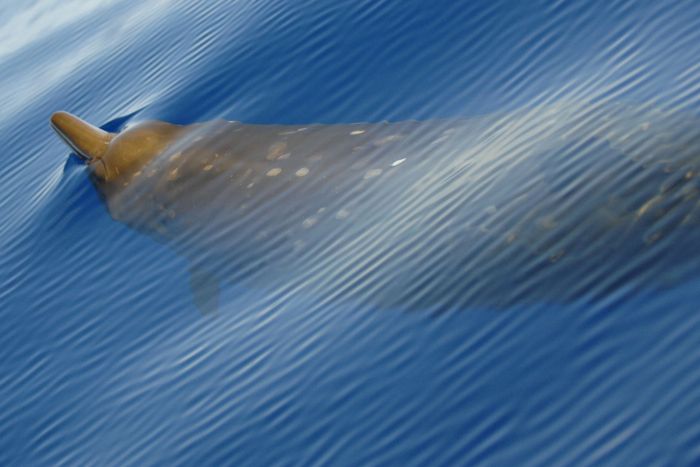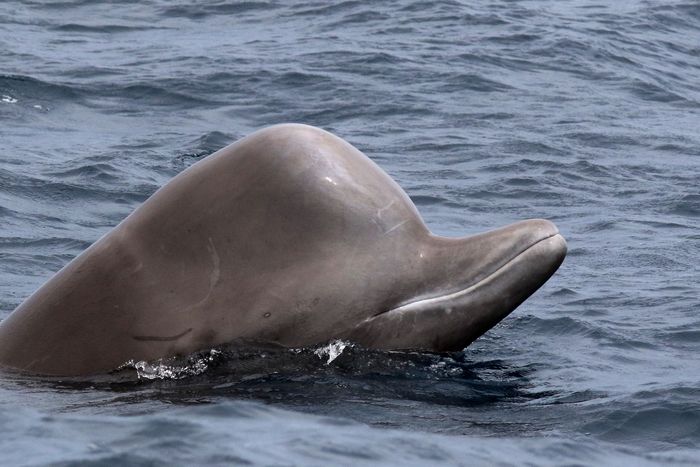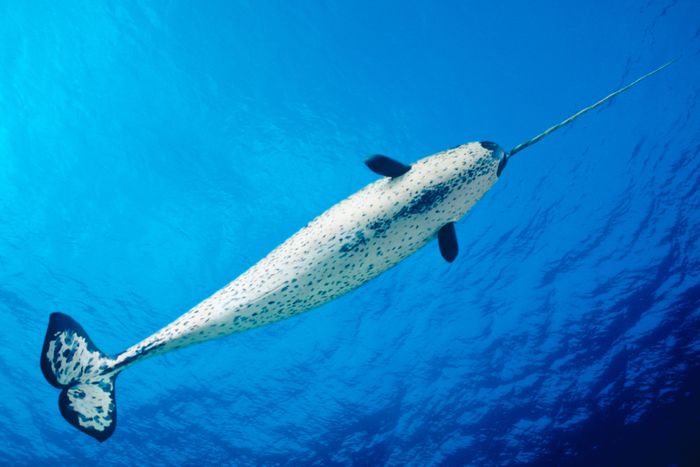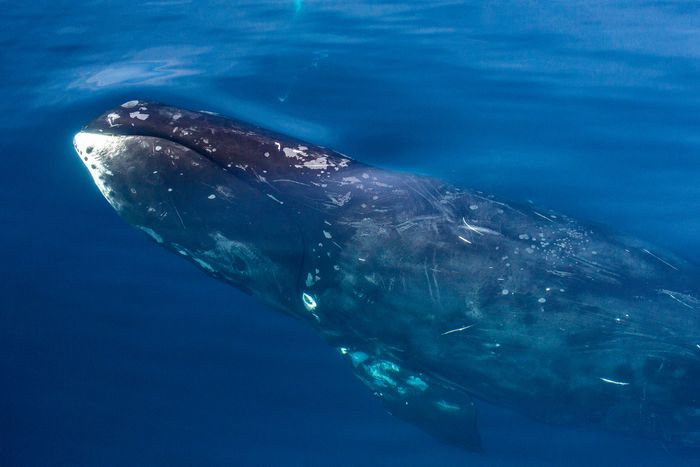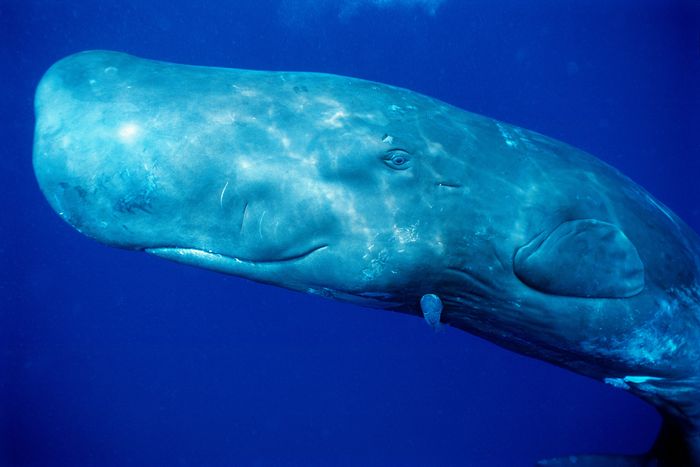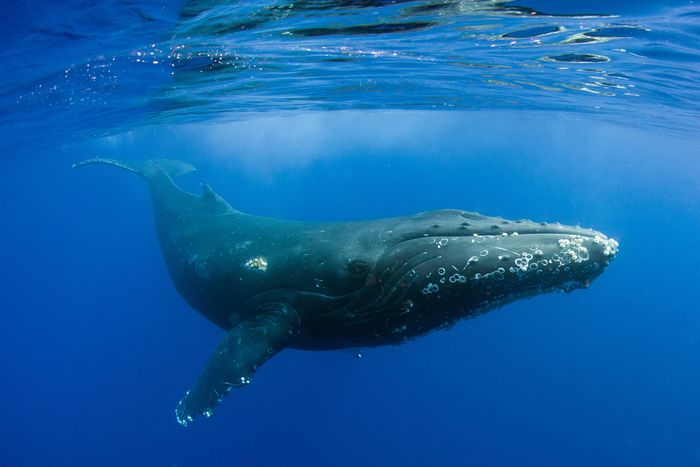
Whales are great. On this point, at least, I think we can all agree. They are big, graceful, smart, underwater beauties with soothing voices. When it comes to which whale is the best whale, however, people are deeply divided.
“Obviously the blue whale,” said a friend when I raised this question, which appeared, unbidden, in my brain one afternoon. Others said beluga. Some argued forcefully for the humpback. Sperm whale, said my father, who then proceeded to send me a number of emails making the sperm whale’s case.
Although people had strong personal feelings about which whale is the best whale, no consensus emerged. And so, I set forth to rank all the species of whales — or, at least, the 38 we know about so far. “It seems like every day somebody’s discovering a new species of beaked whale,” Dr. Kate Stafford, the senior principal oceanographer at the University of Washington’s Applied Physics Laboratory, told me over the phone. (The bowhead whale is the best whale, in her opinion.) She added: “When it comes to whales, what we don’t know far outweighs what we do know.”
For the purpose of time, I excluded other cetaceans, like dolphins and porpoises, which is why you won’t see killer whales or pilot whales on this list (they’re big dolphins).
That being said, without any further delay, let our ranking begin:
38. Blainville’s beaked whales
First of all, all whales are good whales. Still, one whale had to be at the bottom of the list, and that is the Blainville’s beaked whale, no offense. Blainville’s whales are believed to spend 80 percent of their lives in silence. They also suck up their food, which is common for beaked whales, but given that they’re so quiet the rest of the time, the fact that slurping is the main sound they make seems icky.
37. Shepherd’s beaked whales
Shepherd’s beaked whales are the only beaked whales with a full set of functional teeth. Teeth in beaks is the stuff of nightmares. Have you ever looked at the inside of a goose’s mouth?
36. Gervais’s beaked whales
These whales have no relation to the tiresome British comedian Ricky Gervais. Still …
35. Sowerby’s beaked whale
This whale was originally called bidens because of its two protruding teeth. Again, no relation to the other Bidens, but still.
34. Southern bottlenose whale
They are the most commonly sighted beaked whale in the Antarctic, which is a decent flex, I guess.
33/32. Arnoux’s and Baird’s beaked whales
Researchers have debated whether Arnoux’s and Baird’s beaked whales are the same species, but eventually determined they are not. Whatever. They seem fine.
31. Stejneger’s beaked whale
They are thought to be the only beaked-whale species common in Alaska waters. Good for them.
30. True’s beaked whale
Since True’s beaked whales are found in two different geographic locations (in the Atlantic and Indian oceans) scientists believe they may, in fact, be two different subspecies. Make up your mind!
29. Hubbs’s beaked whale
There have been very few confirmed sightings of Hubbs’s beaked whales. However, when they are sighted, they’re easily identified by the distinctive white coloring on their forehead, as though they’re wearing an aquatic newsboy cap — the Leonardo DiCaprios of the ocean.
28. Deraniyagala’s beaked whale
We only know about Deraniyagala’s beaked whales because of a few individuals who became stranded on remote islands in the Indian Ocean and South Pacific. Being elusive and mysterious can be cool, but there is such a thing as being too elusive and too mysterious.
27. Northern or common minke whale
The smallest of all the baleen whales, the northern or common minke whale is considered a relatively fast swimmer, but according to the Whale and Dolphin Conservation (WDC), “they are not ones for showmanship and keep their acrobatic skills largely to themselves, only occasionally breaching and spy-hopping.”
Keeping your talents to yourself, what a waste.
26. Hector’s beaked whale
Sightings of Hector’s beaked whales are very rare, but they’re one of the smallest species of beaked whales, and the males who have been spotted often have scars indicating they’ve been in fights. They are, in other words, tiny bullies.
25. Ginkgo-toothed beaked whale
Ginkgo-toothed beaked whales have never been seen alive, so they could be really cool and fun in person — we simply have no idea.
24. Perrin’s beaked whale
As of May 2019, only six specimens of Perrin’s beaked whales have ever been examined. The first two washed ashore in California in 1975, leading me to believe they are pleasant, old hippies keeping to themselves.
23. Gray’s beaked whale
Gray’s beaked whales are considered one of the more gregarious species of beaked whales, and large groups have been known to strand themselves on beaches in Australia. Getting together with a big group of your friends and doing dangerous things … the teenagers of whales.
22. Omura’s whale
They’re long, slender baleen whales with asymmetrical markings on their face — the right side of their lower jaw is white, and the left side is black. If they were people, they’d be chic Instagram influencers with grids featuring their minimalist apartment and coats from the Row.
21. Spade-toothed beaked whale
The WDC claims the spade-toothed beaked whale is possibly the “least known of all the world’s whales.” Everything we know about the spade-toothed whale is based on two skulls and one jawbone, so it’s possible that if they knew more, researchers would discover it has a terrible personality. Until then, points for being mysterious.
20. Antarctic minke whale
In the 1960s, submarines in the Southern Ocean picked up a bizarre “quacking sound.” In 2013, scientists determined that the quacking was actually Antarctic minke whales chatting with each other. What do you think they were quacking about?
19. Northern bottlenose whale
Northern bottlenose whales are friendly and inquisitive. Their social structures are fairly loose, with individuals going off to do their own thing before coming back together again, which is really healthy and great for personal growth, I imagine.
18. Pygmy beaked whale
The Pygmy beaked whale was only classified as a species in 1991, which is the same year I was born and is why they are somewhat high on the list. I wonder if they also feel like “28 is going to be their year.”
17. Strap-toothed beaked whale
Strap-toothed beaked whales have two large tusks that grow up and over their upper jaw (like straps) and make it impossible for them to open their mouths more than a few inches. Personally, I love this edgy, punk look, and I would go to any concert they invited me to, in pursuit of their approval.
16. Sei whale
American naturalist Roy Chapman Andrews once compared sei whales to cheetahs because they can go very fast — up to 50 mph — but only for short sprints. I bet they “casually” mention this comparison at parties all the time.
15. Indo-Pacific beaked whale
Not much is known about Indo-Pacific beaked whales. Those who have seen them describe their swimming behavior as “quite dramatic,” with lots of “breaching and porpoising at high speed.”
14. Fin whale
Fin whales are the second-biggest species on Earth after the blue whale. They’re often called the “greyhounds of the sea” because they’re so slender and fast. Nobody calls greyhounds the “fin whales of the land,” though, which I’m sure kind of stings.
13/12. North Pacific and North Atlantic right whale
I am going to lump the two north right whales together here. Please don’t get mad at me. Right whales are highly endangered because they have been an easy target of whalers for so long. In fact, their name comes from the fact that whalers considered them the “right whales to kill.”
They are chubby sweeties, curious and sociable, as well as enormous, blubbery, and slow, and they spend a lot of time near the surface, making them especially vulnerable to ship collisions and hunting. Male right whales also have the largest testicles on Earth, which is neither here nor there, but good for them, I guess.
11. Southern right whale
The only reason the southern right whale is ranked slightly ahead of her northern peers is that southern right whales have been observed doing something called “tail sailing” — elevating their tails out of the water to catch a breeze. Scientists aren’t sure why they do this. It might be a way to cool down, or a way of playing. Either way, it sounds very cute.
10. Cuvier’s beaked whale
Cuvier’s beaked whales hold the record for the deepest (9,816 feet) and longest (two hours and 17 minutes) dive of any mammal. Neat!
9/8. Dwarf and pygmy sperm whales
As their names suggest, dwarf and pygmy sperm whales are small, only about six and a half to nine feet long. You can distinguish the two because the pygmy sperm whale’s dorsal fin is lower down on its back. They both excrete a red-brown intestinal liquid when they’re scared, like squid, but are otherwise chill as hell. The WDC describes them as taking “life at their own pace.”
7. Blue whale
At 100 feet long, blue whales are the largest animal known to have ever existed on Earth. They’re so big that a human baby could crawl through one of the major blood vessels of their heart, though it probably shouldn’t.
6. Narwhal
A couple years ago, it became clear over the course of a conversation one evening that my roommate didn’t think narwhals were real. When I told her they did, in fact, exist, she shook her head sadly, pitying me for my apparent ignorance, and said, “They’re like unicorns or dragons.” This interaction alone earns narwhals a spot in the top ten.
5. Bowhead whale
“Bowheads are superlative in every way possible,” Dr. Stafford said in an email. And they are, indeed, impressive. They are the longest-living mammals on Earth, living up to 200 years. They also have the largest mouth of an animal on Earth, which could be good for party tricks.
4. Gray whale
We take gray whales for granted, I believe. Sure, they’re common sights on California whale-watching trips, they’re gray, and they are literal bottom-feeders — to eat, they slide along the ocean floor on their sides, sucking up sediment. But they’ve also undertaken the longest migrations of any mammal, and males have been known to have “slip-and-slide orgies” in which a group of as many as five roll around, splash, and rub their stomachs against each other so their genitals touch. Eating junk, traveling, and having orgies with your friends — sounds fun!
3. Sperm whale
Despite their unfortunate name, sperm whales are extremely cool. They have the largest known brain of any animal ever, modern or extinct, and for food, they sometimes dive up to two kilometers under the surface where they have been known to fight their favorite food — giant squid — in an underwater clash of the titans. They also have an important celebrity alumnus — Moby-Dick.
2. Beluga
Oh my God, belugas are so cute. I want to squish their jiggly melon. I mean, just look at this:
1. Humpback whale
When I first started this list, I assumed belugas would be No. 1. Humpbacks seemed like too basic of a choice — because they’re so active on the surface of the water, they’re extremely popular with whale-watchers. They seemed like the whale equivalent of saying “I hate Mondays.” Okay, we get it. What else is new?
And yet, their popularity is well-deserved. They’re like that jock in high school who was also really nice and invited everyone to their house parties, even the nerds, and also occasionally rescued their classmates from mortal danger. In 2017, for example, a snorkeler and whale biologist said that two adult humpback whales protected her from a tiger shark, with one whale pushing her away from it and the other blocking the shark with its tail. There have also been recorded incidents of them protecting seals and other whales from killer whales. For their heroics, humpback whales are No. 1.
Congratulations, humpbacks. I love you.



